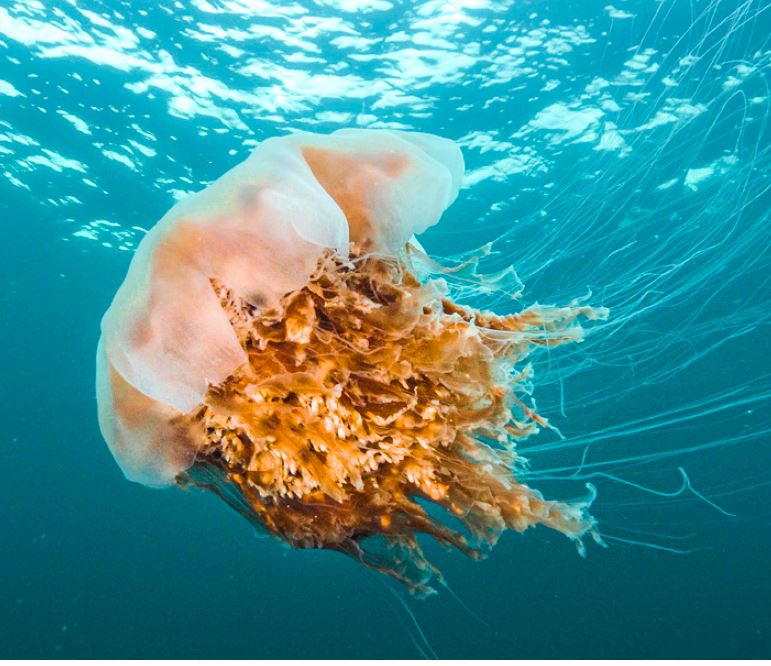The Newsroom
Excerpt: “Heart of the Coast: Biodiversity and Resilience on the Pacific Edge”
How do you dig up a 13,000-year-old footprint? Why are viruses vital to life in the ocean? How can you measure a glacier from an airplane? What is a zombie urchin?
Heart of the Coast by Tyee Bridge brings questions like these to life in a deep exploration of the beauty, mystery and biodiversity of the Pacific coast. Here’s an exclusive excerpt from the foreword by Nancy Knowlton, Sant Chair for Marine Science Emerita, Smithsonian National Museum of Natural History, and author of Citizens of the Sea.
Foreword
I am a coral reef ecologist, so most of my time has been spent far from the chilly waters of the northeast Pacific. But the tropics are not where I started. I first learned how to collect scientific data along the shores of the Strait of Georgia, whose waters are central to the stories upon which this book is built. I got my scientific diving credentials just to the south, off the coast of central California, where many of the creatures featured here are also found. Reading Heart of the Coast was like opening an old scrapbook, reawakening memories of the roots of my life’s work. The waters may be cold, but the memories are warm.
It can’t be denied, however: the northeast Pacific is a challenging place to do scientific research, as we humans lack the blubber of the seals or the fur coats of the sea otters that hunt here. The seawater that runs through the marine laboratories of the region is so frigid that your hands ache within seconds of immersing them. The thickest wet suits are not enough to keep warm, and even with dry suits, scuba diving is a physiologically draining experience. Extreme tides and strong waves create currents and surges that make it difficult to do the most elementary tasks, or even simply stay in place. It is more than difficult; it is dangerous. People have died trying to understand what makes this part of the ocean tick.
Despite these challenges, the scientific payoffs to studying the northeast Pacific coast have been enormous. Indeed, much of what students learn and professors teach in marine biology classes today was gleaned from these efforts. Heart of the Coast opens up this world to anyone who delves into its pages. We learn of the complex relationships linking sea stars, sea urchins, kelp, and sea otters, as well as the human-caused disruption of these connections driven by our once insatiable demand for sea otter pelts. It is also a warning of what might lie ahead, delivered by the scientists who discovered and then documented in heartbreaking detail how once abundant sea stars have vanished. They were the victims of a still poorly understood disease far more contagious and deadly than the coronavirus, one whose catastrophic impacts were fueled by climate change.
Perhaps most importantly, this is a deeply human story, and not just one of the despair that comes from counting thousands of dying and dissolving sea stars. It is also the story of the archaeologists who discovered footprints left along the shore by humans who traveled the “kelp highway” 13,000 years ago. It is the story of the bioblitzers enchanted by each new worm, crab, fish, and snail they discover during a three-week effort to record what lives in the region. It is the story of the insights that have come thanks to the generosity of philanthropists who have committed their resources to exploring, protecting, and communicating about the waters of the region. In the end, it is the story of a passionate commitment to place and the wisdom and joy that this brings. In that sense, despite all the concerns, it is a story of ocean optimism.
Nancy Knowlton
Sant Chair for Marine Science Emerita, Smithsonian National Museum of Natural History, and author of Citizens of the Sea
Excerpted from Heart of the Coast: Biodiversity and Resilience on the Pacific Edge by Tyee Bridge. Photograph by Tavish Campbell. Copyright © 2020 by Tula Foundation. Excerpted with permission from Figure 1 Publishing. All rights reserved. No part of this excerpt may be reproduced or reprinted without permission in writing from the publisher.
